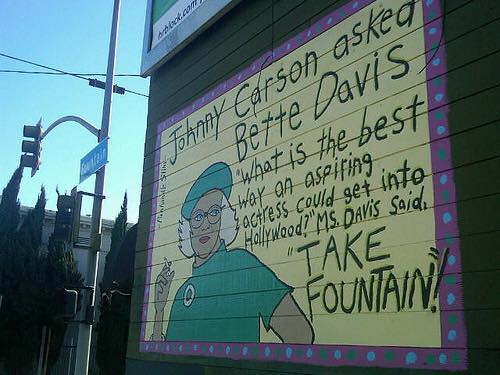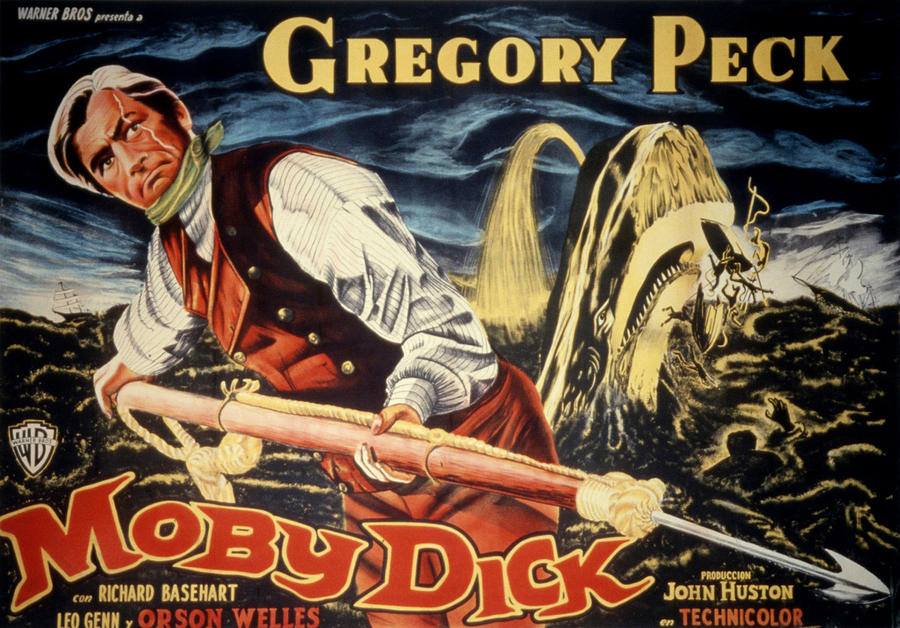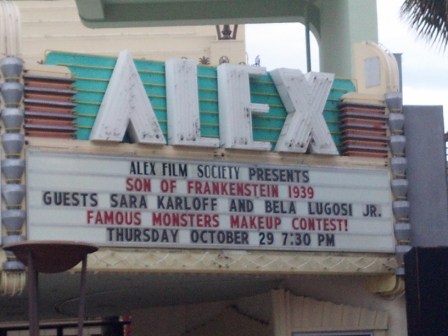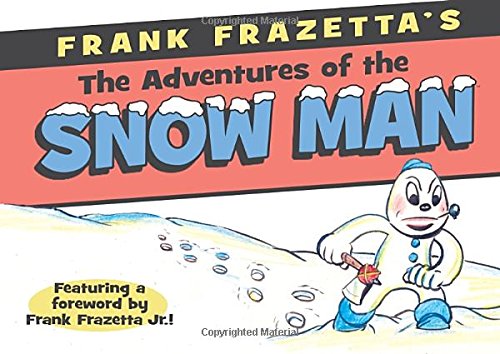(1) RETURN OF INCOME. Jim C. Hines has posted the first results from his annual survey of novelist income.
Gross Income
Let’s start by looking at how much our authors made in 2016 before taxes or expenses. The total ranged from a few dollars to almost five million. Eight novelists made more than a million dollars (before taxes) in 2016.
- I admit, I was a little surprised by this, and wondered if maybe people were exaggerating or hit an extra zero. Fortunately, the survey also asked for an identifier (name or other) and an email address for anyone who wanted to be informed of the survey results. Looking at who was reporting these numbers, I believe they’re accurate.
Average Income: $114,124
Median Income: $17,000
(I think the median is more useful than the average, here. The average is pulled up significantly by those very successful outliers.)
Much more data, sliced and diced various ways, at the post.
(2) NEW AWARD FOR PAKISTANI SF. The inaugural Salam Award for Imaginative Fiction will be given this year. The new short story award, intended to “promote science fiction and related genres of writing in Pakistan,” is named for Dr. Albus Salam, one of the pioneers of science in Pakistan.
The website’s administrator says some Pakistanis may see pirated copies of sf movies, when it comes to written sf there’s little awareness —
I don’t know if science fiction as a genre even exist for Pakistani readers. When you go to book stores, you don’t find any books other than religous ones or text books needed for school curriculum. How can an average reader than get exposure to different genres of writing and specially fiction?
Eligible for the award are original, previously unpublished English-language stories of 10,000 words or less by persons residing in Pakistan, or of Pakistani birth/descent. (The complete guidelines are here.) Entries must be received by July 31.
The winner will receive a cash prize of Rs 50,000, a review by an established literary agent, a review from a professional editor, with the potential for publication by Tor.com.
The award judges for 2017 are sf writers and critics: Jeff VanderMeer, Usman Malik, and Mahvesh Murad.
(3) I LOST ON… Jeopardy! devoted a category to “Sci-Fi Books” on February 14. I only knew the $1,000 question – you’re bound to do better. (The correct reply will display if you scroll over the dollar amount.)
I didn’t get this one despite having read the damn book!
Thomas in this James Dashner sci-fi book awakens being “jerked upward like an old lift in a mine shaft”
(4) NANOWRIMO’S POLITICAL CONSCIOUSNESS. Tom Knighton, in an article for PJ Media headlined “Supposedly Nonpolitical Writers Group Goes Hard Left”, criticizes a message he received from NaNoWriMo .
Unfortunately, the minds behind NaNoWriMo don’t seem to appreciate what that word “apolitical” really means. How do I know? Because of this email the Internet-based creative writing project sent to its mailing list late last week.
Dear [Name],
As a creative writing nonprofit, we’re not a political organization. We don’t endorse candidates or support any particular party. In an ideal world, we would focus only on empowering people to write.
Yet we find ourselves in a time where people’s ability to tell their stories—and even to safely exist—is at stake….
So while we are not a political organization, we feel moved to take action.
In response to the executive order, as well as any future government efforts that threaten people’s basic freedoms, we will:
Celebrate creativity over apathy, diversity over fear, and productivity over despair.
Welcome all stories and continue to make NaNoWriMo a safe space for all writers.
Advocate for the transformative power of storytelling to connect people and build a better world.
If you have concrete ideas for how we can work toward these goals (or if you have feedback about anything in this message), please share your thoughts.
That wasn’t all. Oh, no, not by any means. They also took issue with President Trump’s desire to end the National Endowment for the Arts and the National Endowment for the Humanities.
There are a few things about NaNoWriMo that one must consider before truly understanding the context of the above email. First, there are no prizes for NaNoWriMo. “Winners” are basically all who complete a book, and the prize is…well, you wrote a book. Not insignificant considering how few people who talk about books ever finish one, but that’s about it.
Further, since it is basically an internet writers group/contest, President Trump’s executive order will have precisely zero impact on it. None.
In short, there’s absolutely no reason for Grant Faulkner to put his name on an email about a piece of political hay that impacts his operation in no way, shape, or form.
The email is more about virtue signaling, a way to tell progressives that NaNoWriMo is with them — and screw the right-leaning members of the email list! Of course, it’s also possible they couldn’t imagine that anyone on their list actually leans right politically.
(5) THE MEANS OF PRODUCTION. The Shimmer Program has posted Sanfeng’s “Science Fiction in China: 2016 in Review”. I found it an interesting contrast with U.S. society – people generally were happy to hear about President Obama’s tastes as an sf fan, but what if he had announced a plan to co-opt science fiction to further his policies?
SF as National Agenda
Historically, the trajectory of Chinese SF was heavily influenced by top-down political forces at times. Recently it begins to receive continuous and influential support from the governments at all levels. On the one hand, following the tradition of focusing on ‘science’ in science fiction, the government re-emphasizes SF as a useful instrument for popularizing science and improving citizen’s scientific literacy. On the other hand, due to the high popularity and penetration rate of SF media, it is conceivable that the so-called ‘SF industry’ is often adopted in governmental agenda for creative and cultural industry development.
In a central government’s paper regarding promoting citizens’ science literacy issued by State Council in February 2016, it is explicitly stipulated that the government shall support science fiction writing as part of popular science writing. More details were revealed in a later talk given by Han Qide, president of China Association for Science and Technology (CAST), announcing that CAST will set up a national award for SF and host international SF festivals. The story reached the climax when Vice Chairman Li Yuanchao attended 2016 National SF Convention held in September 2016 and gave a speech at the opening ceremony warmly encouraging SF writing.
The post also tells about the 30th anniversary Galaxy Awards, and the inaugural winners of a new set of Chinese sf awards.
At its 30th anniversary, Galaxy Awards were presented on the evening of September 8th. Best Novel was awarded to Dooms Year by He Xi. Three days later, the ceremony of 7th Chinese Nebula Awards was held in National Library of China. The top award Best Novel was awarded to Jiang Bo for Chasing the Shadows and the Lights, which is the final installment of his epic Heart of Galaxy trilogy.
A couple of new SF awards are noteworthy. First ‘Droplet Awards’, named after a powerful and terrifying alien weapon in TBP, were organized by Tecent to call for submission of SF screenplays, comics and short videos. Best Screenplay was awarded to Day after Day by Feng Zhigang and Best Comics to The Innocent City by Yuzhou Muchang. Besides, First ‘Nebula Awards for Chinese SF Films’ were presented at a ceremony held in Chengdu in August 2016. Best SF Movie was given to a 2008 children SF movie CJ7 directed by Stephen Chow. Best SF Short Film was awarded to Waterdrop, a highly praised fan film of TBP, directed and produced by Wang Ren.
The Shimmer Program has also compiled a list of works from China eligible for 2017 Hugo nominations.
(7) TAKE YOUR SHOES OFF, SET A SPELL. Co-Geeking’s Erik Jensen is an American married to a Finn (Eppu) and living in the U.S. He has written a column of advice to fans going to the Worldcon this summer: “How to Helsinki: Concerning Finns”. There are quite a few do’s and don’ts, for example —
DO give people space – Finns expect a lot of it and they will give you a lot of it in return. If you’re talking to a Finn and they back away, don’t chase them. They’re probably not trying to get away from you, they’re just resetting comfortable boundaries. (See previous points.)
DO take your shoes off if you visit a private residence – so you don’t track in dirt that your host then has to clean up. Most Finnish homes have places for taking off and putting on shoes right by the front door….
…DON’T suggest getting together unless you want to make concrete plans – “We should do lunch some time” is just a casual pleasantry in the US. It’s an expression of general good will with no commitment attached. In Finland it is a commitment to future plans and Finns will expect you to follow through.
DON’T make small talk – if you’re in conversation with a Finn and feel like there’s an awkward silence, don’t try to fill it. For most Finns, silence is not awkward at all, but comfortable. The conversation will start again when someone has something to say.
And Eppu has put together an index to cultural resources published by Worldcon 75.
- “Finland: A Very Short Guide For Your First Trip” (Facebook)
- “Finland: An Assortment of Notes and Information” (in Progress Report 1)
- “Finnish Fandom: Some Unique Characteristics” (in Progress Report 1)
- “Finnish Foods and Where to Find Them” (in Progress Report 3)
- “Hotels: Understanding the Differences between Countries” (in Progress Report 3)
- “Non-Fandom Things to Do in Helsinki, If You Have the Time” (in Progress Report 2)
- “Älä hätäile! Don’t Panic! A Short Guide for Pronouncing Finnish” (in Progress Report 2)
(8) TODAY IN HISTORY
- February 15, 1903 — The first Teddy bear goes on sale.
Toy store owner and inventor Morris Michtom places two stuffed bears in his shop window, advertising them as Teddy bears. Michtom had earlier petitioned President Theodore Roosevelt for permission to use his nickname, Teddy. The president agreed and, before long, other toy manufacturers began turning out copies of Michtom’s stuffed bears, which soon became a national childhood institution
- February 15, 1950 — Walt Disney’s animated feature Cinderella opens in theaters across the United States.
(9) TODAY’S BIRTHDAY BOY
- Born February 15, 1950 — Matt Groening, cartoonist; creator of The Simpsons.
(10) FORD’S IN HIS FLIVVER. Stephen Baxter has an op-ed in the February 11 Financial Times, “Dude, where’s my flying car?” He looks at flying cars, based on Uber’s announcement that they are launching a flying car development project. Examining the way flying cars are portrayed in movies from Metropolis through Back To the Future and Thunderbirds Are Go, he concludes that it’s more likely that monorails and electric cabs will be the future’s preferred form of transportation and “flying cars will remain a plaything of the super-rich–and a dream (perhaps in virtual reality) for the rest of us.”
Note – you will probably hit a paywall using the direct link. I was able to access and read the article through a Google search.
(11) LITTLE BUNDLES OF JOY. And maybe not all that little, when you pop for the maximum sized bundle.
- There’s a Humble Bundle of sff books from Subterranean Press.
- And elsewhere, a Steampunk Storybundle, curated by Cat Rambo.
Both are limited-time offers.
(12) NEW BIMBO VERSE. Maya Kaathryn Bohnhoff continues her Book View Café series with “There’s a Bimbo on the Cover Verse 8: Who Reads Reviews, Anyway?” and a story of the Analog Mafia.
They reviewed my book in Locus magazine.
They reviewed my book in Locus magazine.
The way Mark Kelly synopsized it,
I barely recognized it,
but they reviewed my book in Locus magazine.
True story. In fact, it happened repeatedly with my Analog stories….
(13) ETHICS BEYOND THE STRATOSPHERE. At Dreaming About Other Worlds, Aaron has reviewed Nobody Owns the Moon: The Ethics of Space Exploitation by Tony Milligan.
In Nobody Owns the Moon, Milligan begins his inquiry from the ground up, so to speak, starting with the fundamental question of whether space exploration itself can be ethically justified at all, specifically focusing on whether manned space exploration is justifiable. By starting at such a fundamental level, Milligan indicates that he is going to tackle the questions at hand without presuming that anything is justified. Instead, Milligan works through each issue with as few preconceptions as possible, examining both the arguments for and against the proposition being examined. This can seem frustratingly indecisive at times, because with most questions there is no clear cut answer one way or the other, because there are pros and cons to every position. The end result is that for most such questions, the answer lies in choosing which is the best of a flawed collection of alternatives, not in choosing the one that is clearly correct.
Milligan is also concerned with only dealing with questions that result from actions that are within the realm of possibility. To this end, he spends a fair amount of time examining the question of whether terraforming a planet to be more Earth-like is possible before he gets into the question of whether it is ethical. As he points out, examining a question that could never possibly come to pass is simply idle speculation. To a certain extent, almost all of the questions Milligan addresses in the book are somewhat hypothetical – no one is currently actually mining asteroids or terraforming Mars, but as he outlines in the book, they are all within the realm of reasonable possibility, and thus it is worthwhile to consider their the ethical implications.
(14) FIXING THE SCIENCE IN SCIENCE FICTION. Joe Stech, of Compelling SF, asks you to help him decide which of his guidelines to work on first.
Every so often I receive engaging story submissions that have wonderful writing and great human elements, but contain clearly implausible science. This can pull readers out of the story and potentially mar an otherwise excellent work.
I’ve been thinking about working with scientists to create a series of writer’s guides to help with this pain point, and I was hoping you could help me out by letting me know which subjects you’d find most useful in such a series. The idea is that we’d provide a general overview of the topic and then give some specific tips regarding common misconceptions that we’ve seen. If you have a moment please let me know what you think via the following survey:
A Survey About Science Fiction Writer’s Guides
Feel free to share the survey link with others that might have an interest.
(15) CHURCHILL’S LOST ESSAY ABOUT ALIENS. An unpublished essay by Winston Churchill about the possibility of life on other worlds is the subject of an article by Mario Livio in the latest issue of Nature. According to the BBC:
The document was uncovered in the National Churchill Museum in Fulton, Missouri, by the institution’s new director Timothy Riley….
Churchill was a prolific writer: in the 1920s and 30s, he penned popular science essays on topics as diverse as evolution and fusion power. Mr Riley, director of the Churchill Museum, believes the essay on alien life was written at the former prime minister’s home in Chartwell in 1939, before World War II broke out.
It may have been informed by conversations with the wartime leader’s friend, Lindemann, who was a physicist, and might have been intended for publication in the News of the World newspaper.
It was also written soon after the 1938 US radio broadcast by Orson Welles dramatising The War of the Worlds by HG Wells. The radio programme sparked a panic when it was mistaken by some listeners for a real news report about the invasion of Earth by Martians.
Dr Livio told BBC News that there were no firm plans to publish the article because of issues surrounding the copyright. However, he said the Churchill Museum was working to resolve these.
(16) SAME BAT CHANNEL, NOT SAME BAT. Carl Slaughter sent a link to “The Evolution of Batman in Television and Film, 1943 – 2016.”
(17) THE GOOD STUFF. Aliette de Bodard has put up her awards eligibility and recommendations post.
I feel like I should start with the usual call to action/disclaimer: if you’re eligible to vote for any of the awards (Nebulas/Hugos/etc.), then please do so, even if you felt you haven’t read enough. It’s a big field and few people can claim to have read everything that came out last year–and generally the people who recuse themselves from voting tend to be marginalised folks, which skews ballots. So please please vote?
Here is an excerpt from her recommendations.
Novelettes
I enjoyed Fran Wilde’s JEWEL AND HER LAPIDARY: set in a universe where gems hold magic but can drive people mad, JEWEL concerns itself with the fall of that kingdom, and the desperate straits in which it leaves its princess and her companion. This is a heart wrenching tale of power, friendship, and two women’s struggle to survive.
Marjorie Liu’s “The Briar and the Rose” (which I suspect is a novelette, from Navah Wolfe’s and Dominik Parisien’s The Starlit Wood) is a retelling of Sleeping Beauty with a twist: a swordswoman falls in love with Rose–but Rose is only herself one day of the week, when the witch who occupies her body has to rest… I loved the characters and their relationship, and the quest undertaken by the swordswoman to free Rose.
Alyssa Wong’s “You’ll Surely Drown Here if You Stay”: a weird Western with a lovely friendship at its core, a tale of the desert, magic, belonging, and the weight of the dead. Definitely sticks in the mind.
Christopher Kastensmidt’s Elephant and Macaw Banner is sword and muskets set in colonial Brazil, following the adventures of Gerard van Oost and Oludara in a land filled with strange creatures. It’s a series of linked novelettes (with gorgeous cover art), and it’s great fun. Two volumes came out last year: A Torrential Complication and A Tumultuous Convergence.
(18) SIRI. In “The Voice (Siri)–a 48 hr film” on Vimeo, Yonatan Tal imagines what Siri would do if confronted with too many inane questions, including knock-knock jokes and “Where can I get some drugs?”
[Thanks to Martin Morse Wooster, Andrew Porter, Steven H Silver, JJ, Mark-kitteh, Joe H., Peter J, John M. Cowan, John King Tarpinian, Aaron, and Carl Slaughter for some of these stories. Title credit goes to File 770 contributing editor of the day Dawn Incognito.]












